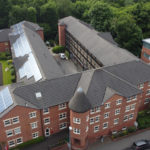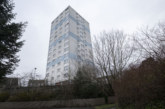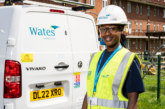 Tony Doyle, Director & Operator at Seagull Aerial Survey & Photography and member of the Institute of Roofing, considers the impact of the use of drones in estates management on the role of surveyors.
Tony Doyle, Director & Operator at Seagull Aerial Survey & Photography and member of the Institute of Roofing, considers the impact of the use of drones in estates management on the role of surveyors.
Drones have been increasing in prominence within the ‘property and estates management’ sector for several years now, giving those charged with maintaining their roofs unprecedented means of safely and economically assessing the condition of those roofs. But what’s the reality here? Can drones really take the place of old-fashioned manual roof inspections? Is the flying camera going to put roof surveyors, mobile access operators and scaffold hire companies out of business?
The simple answer is ‘No’ — a manual inspection, where the surveyor can peel back defective membrane laps, peek under slates to see the nails and battens, or prise open a sheet metal lap to see the insulation below, will always be the ideal means of determining the state of a roof.
But obtaining ‘the ideal’ is not always practical or even possible. Countless roofs around the country have suffered years of neglect simply due to the fact that they were too high, too complex or too dangerous to climb onto for routine inspection (in other words — too expensive!). The managers of the property have tended to wait until there’s an issue with the roof before spending money on investigation and remedy. The adoption of drone technology into the roofing maintenance business has changed all that.
Drones have opened up new ways of working, and increased efficiencies, within the roof maintenance sector, sometimes by being able to substitute for an expensive manual inspection but also by being able to enhance traditional manual inspections.
New ways of working
When used for routine and regular maintenance inspections, drone-cameras will often be able to record that the roof is in good condition, with no obvious defects. This gives the premises management peace-of-mind that no expensive repairs are imminent. And all for a relatively modest fee.
Or maybe the drone imagery has revealed some defects requiring attention. Missing slates, loose lead flashings or blocked outlets are some common items. These will require manual access to the roof, but the contractor now knows exactly what is required and can price and organise the job accordingly.
On other occasions the roofing or building surveyor examining the drone images will conclude that there is an underlying problem with the roof, which requires further investigation. Evidence of nail or batten fatigue on a slated roof would be such an example. In this case a manual inspection by an experienced surveyor would be recommended and some form of safe access will be required, but the roofing surveyor is forearmed with good information regarding the roof’s condition, and having used the drone to identify the roofing problem will have been money well spent.
Ideal combination
Sometimes the client’s requirement is for a more thorough roof survey than can be supplied by drone imagery alone. A full appraisal of the underlying components of the roof build-up, their condition, and their impact on design matters such as condensation control and thermal performance may be the brief. Even in this case it is likely that only isolated parts of the roof can be accessed either by tower scaffolds or cherry-pickers, and it’s often impossible for an operative to safely traverse the entirety of a pitched roof. Their external survey may be limited to a localised area of the roof, but by working in combination with a drone they can obtain information about the likely extent of any problems or pertinent roofing conditions.
The drone may only be a flying sensor, but premises managers today have a readily available safe and economical means of staying ahead of the curve when it comes to managing their roofing assets.
More information on ARPAS-UK here.
More information on Connected Places Catapult here.









